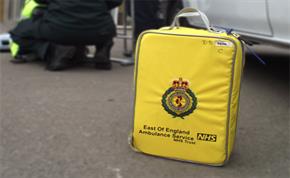Clinical focus: a look at sick sinus syndrome

What is it?
A generalised abnormality of cardiac impulse formation causing sinus node dysfunction, so the atrial heart rate is either too low or too high to maintain adequate cardiac output. There are a range of causes, including cardiac degeneration, cardiomyopathy, MI, some cancers, pericarditis, drugs such as digoxin, beta blockers and calcium channel blockers and congenital abnormalities.
The average patient age is 68 and approximately one in 600 cardiac patients over the age of 65 suffer from sick sinus syndrome. Bradycardia secondary to sick sinus syndrome is the most common reason for pacemaker implantation.
What does it look like?
Diagnosis without ECG can be difficult due to the often slow process of the disease, and non-specific symptoms such as palpitations, fainting, dizziness, fatigue and weakness, confusion, memory loss, irritability, waking at night, digestive problems and angina like chest pain.
ECGs can show:
- prolonged atrial pauses
- inappropriate bradycardia
- inappropriate tachycardia
- alternation between bradycardia and tachycardia.
What should I do about it?
Symptomatic patients often require a dual chamber pacemaker. Patients with bradycardias can be treated with atropine as per clinical guidelines. Transcutaneous pacing is also recommended if a suitable critical care resource is available to you.
Sick sinus syndrome is a rare condition – the Trust has produced a ‘rare conditions handbook’ that covers this, and other rare illnesses, to help with your clinical decision making. You can download a copy here.
